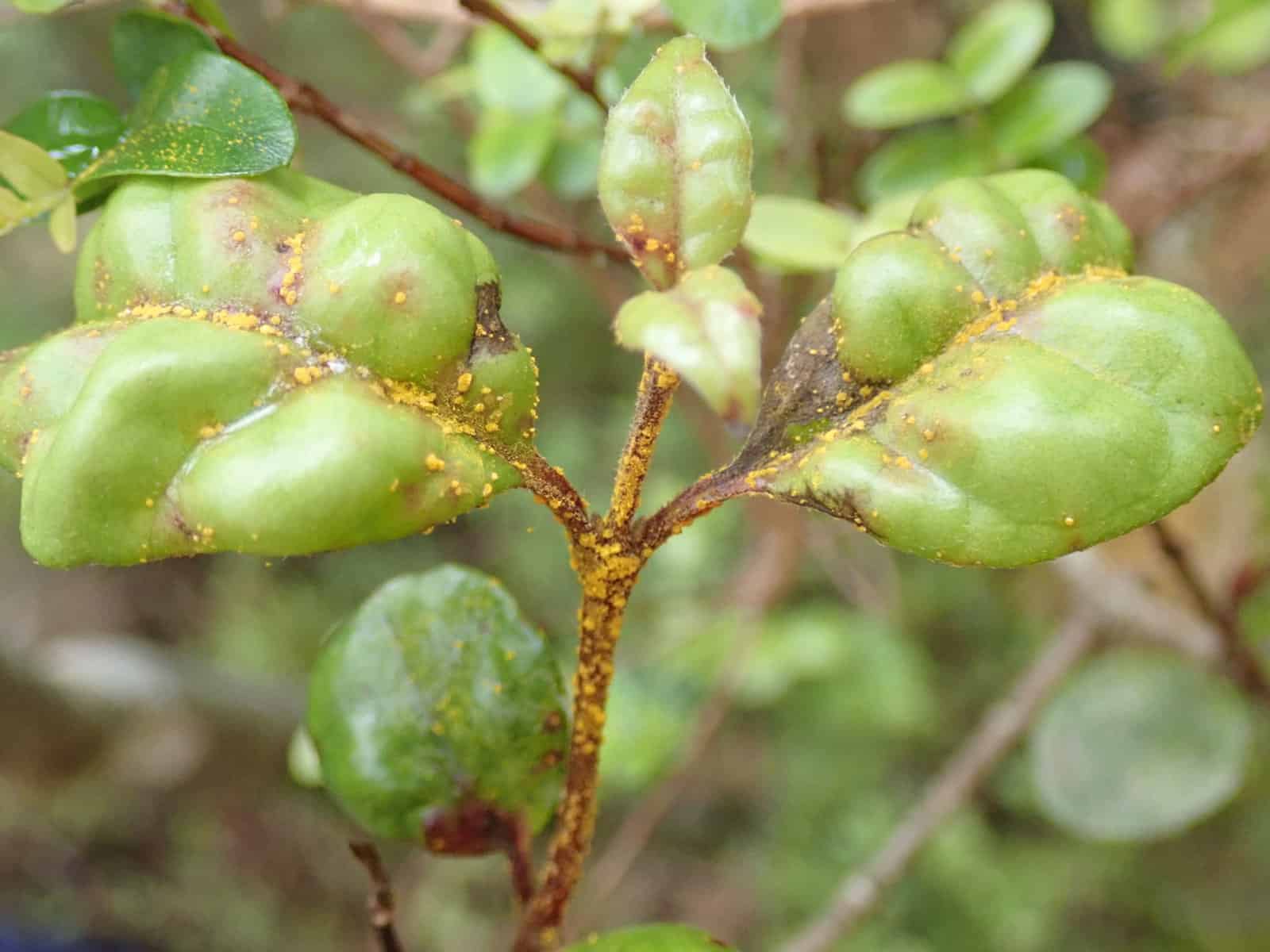“I’ve been monitoring myrtle rust in native forests for the last three years,” says Roanne Sutherland, a myrtle rust researcher at Scion. “We’ve had seedling death occur, but this is the first time the deaths of large, mature trees have been reported.”
Dead trees were first observed this spring by Graeme Atkins, a local ranger who has worked for the Department of Conservation for 26 years.
“I have always been interested in our native plants,” says Atkins. “I’ve been lucky enough to work in a job where I can do what I love.”
Now, the plants Atkins and all New Zealanders love are under threat. Myrtle rust, a disease affecting plants in the myrtle family, is caused by the pathogenic fungus Austropuccinia psidii. The fungus is windborne and arrived on westerly winds from Australia in 2017. Myrtle rust has now spread across the North Island and parts of the South Island, threatening New Zealand’s native myrtles, including pōhutukawa and mānuka.
Atkins found infected plants in the East Cape in April 2018. However, by then it had been acknowledged that myrtle rust could not be permanently eradicated, and efforts had moved on to management and research. While he waited for science to catch up to the disease, he kept an eye on the trees. Atkins has detected infection on several species, although ramarama (Lophomyrtus bullata) and rohutu (Lophomyrtus obcordata) have been hardest hit in the East Cape.
“If someone had told me four years ago that ramarama was going to be on the threatened plants list, I would have laughed,” he says. “Where I live there are tens of thousands if not hundreds of thousands of ramarama in seedling carpets.”


Since myrtle rust infects new plant tissue most easily, and Lophomyrtus is a particularly susceptible genus, these seedling carpets were the first to die off. Then, infection started preventing mature trees from producing flowers and seeds. By 2019, Atkins noticed that young trees were dying. Now, in 2020, Atkins has seen fully mature trees die. Without adult trees, there will be no seeds, no more seedling carpets and no possibility of recruitment. Ramarama may disappear from the local environment.
“The wider ecological effects of this are unknown,” says Sutherland. “What birds and insects are going to be impacted by the loss of this species? What plants will take their place?”
Unfortunately, what is also not well understood, is the extent of myrtle rust across New Zealand. Researchers are working hard to understand the disease and develop management tools within the Beyond Myrtle Rust and Ngā Rākau Taketake research programmes. However, long-term monitoring of native forests on a much greater scale than is currently taking place, is essential to measuring the impact of myrtle rust and to find natural resistance.
“If we can find individuals with natural resistance to myrtle rust infection, we can then collect seeds from those trees to repopulate areas where trees have died,” says Atkins.
You can help if you see myrtle rust this summer, by not touching it, and taking photos to upload to citizen science app iNaturalist.nz. For more information about the disease, see www.myrtlerust.org.nz
For more information, contact Renee Johansen , project manager for the Beyond Myrtle Rust Programme, hosted by Manaaki Whenua – Landcare Research.
